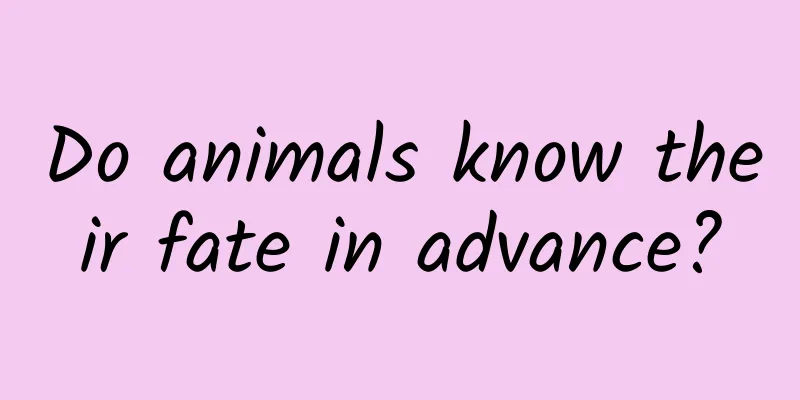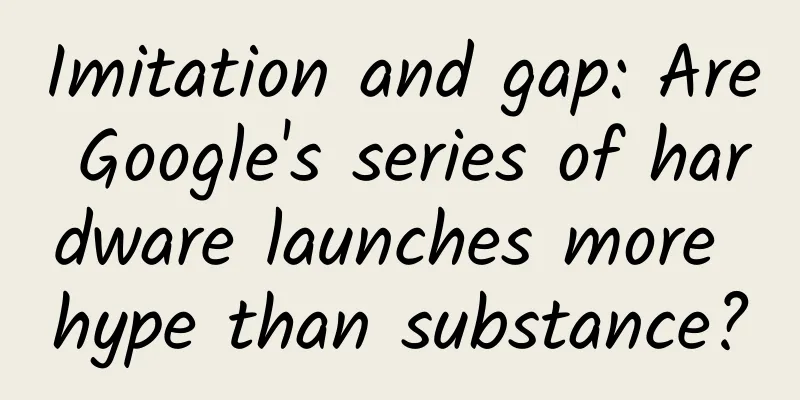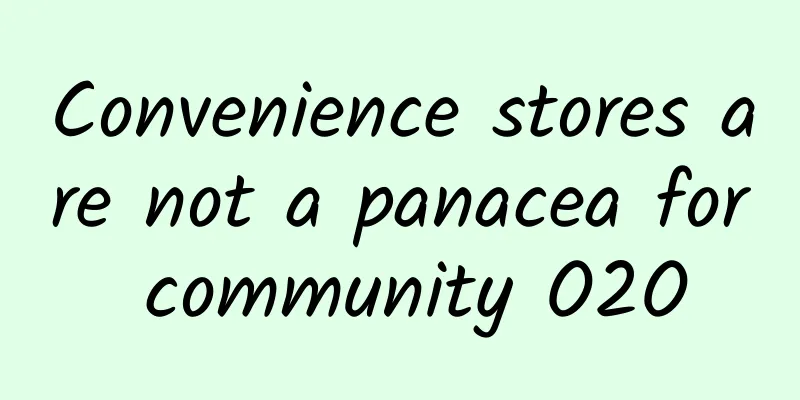Do animals know their fate in advance?

|
© Brad Wilson Leviathan Press: At the beginning of last year, an old cat in my family passed away due to the spread of a tumor on her breast after surgery. In the weeks before her death, she had rarely eaten and often huddled in a corner to sleep. I got up very early that day and found her sitting by the wall, her body trembling slightly. After about a few dozen minutes, she suddenly staggered to her feet and walked towards the balcony. I felt something was wrong, so I followed her and saw an unforgettable scene: she let out a long wail that I had never heard before, and her body slowly fell to the right, her eyes slightly open, the corners of her mouth twitched a few times, and she exhaled her last breath. I burst into tears instantly. I have heard that cats will find a relatively secluded and safe place to die alone before they die - some people say this may be to avoid their bodies being discovered by other animals. I don't know why my old cat suddenly struggled to walk to the balcony before she died. Maybe she really realized that her end was coming and the balcony was the final destination of her life? I also want to know what she felt before she died - if she really felt anything. Soon after arriving at a Dutch zoo, chimpanzee Moni lost her baby. Her keepers didn't even know she was pregnant. Neither did Zoë Goldsborough, a graduate student studying jealousy who had spent months recording every social interaction of each chimpanzee, four days a week, from 9 a.m. to 5 p.m. On a cold winter morning, Goldsborough found Moni, sitting alone on a tall tree stump in the middle of her enclosure, holding something in her arms. It wasn’t surprising that she was alone: Monie had always had trouble fitting in with the 14 other chimpanzees in her enclosure. But as Goldsborough approached, she realized something was wrong. Monie was holding a newborn in her arms, but it wasn’t moving. Goldsborough quickly ran downstairs to the room where the keepers were preparing food for the chimpanzees and told them what she had seen. At first, they didn't believe her and said that Monie was probably just playing with some straw. When the keepers saw the cub for themselves, they entered the enclosure and tried to take it away from Monie. But Monie wouldn't let go, so they decided to wait and try again later. Meanwhile, another female chimpanzee named Tushi was wandering nearby. Tushi was one of Goldsborough’s favorite chimpanzees. A few years earlier, Tushi had become famous for planning and successfully attacking a drone that was used to film chimpanzees for a documentary.[1] Prior to that, she had also suffered a miscarriage. For Tushie, seeing Monie and her baby may have brought back memories, even afterimages of those emotions. She stayed by Monie’s side for the next two days, while Monie held the tiny body. Finally, during a struggle with the keepers, the body fell from Monie’s hands, and Tushie snatched it away, refusing to give it back. Monie became extremely agitated, and the keepers isolated Tushie in a separate room, while Monie kept banging on the door outside. Monie, who lost her child. © Zoë Goldsborough Goldsborough wasn’t sure how to interpret the action. Monie seemed to be driven by strong maternal emotions, an emotion familiar to humans. Tuhee's reaction may have been a deep emotional remembrance of the past. But we can't be sure that the two chimps truly understood what was happening to their newborn. They may have mistakenly believed that it would come back to life. It's worth noting that even though chimpanzees are some of the closest and most carefully observed creatures to humans, we still can't be sure of their true feelings. --- In June, more than 20 scientists attended the largest-ever conference on “comparative thanatology” – the study of how animals experience death – at Kyoto University.[2] Although the field is relatively niche, literature on it dates back to Aristotle, who wrote in 350 B.C. that he had seen a pair of dolphins swimming underwater in the Aegean Sea, holding up a dead calf, “out of compassion, trying to prevent it from being eaten by other creatures.” Much of the literature on comparative thanatology is made up of similar anecdotes. Some are brief, like Aristotle’s account, but others, like the story of Monie and her child, contain unusually rich social detail. This story was published in 2019 in the journal Primates [3], and we will return to this topic later. Scientists want to go beyond these isolated scenes. They want to understand what emotions go through animals when they lose a loved one. They want to know if animals are troubled by death in the same way we are. However, practical problems limit them. They can’t interview the animals (at least not yet). They can monitor hormonal changes, such as spikes in cortisol levels in baboons when they lose a loved one, but these changes may also be caused by other stressors and may not accurately capture the texture of their grief—if they are indeed feeling grief.[4] © The New York Times By far the best comparative thanatology data come from observations of groups of animals in the wild or in zoos. But here, too, there are problems. The species with the most interesting responses to death, typically nonprimates, whales, and elephants, tend to have very long lifespans. Their groups don’t lose individuals very often. So gathering systematic data on responses to death often requires years or even decades of work. Alecia Carter, an evolutionary anthropologist at the University College of London, told me that she had found a colony of more than 1,000 rhesus macaques on Santiago Island, near Puerto Rico, that was ideal for such studies. The monkeys are highly social and typically live 15 to 20 years—long enough to form deep bonds, but not so long that too few of them die. To get started, one of Carter’s graduate students recently spent nearly a summer there collecting data. Only 11 monkeys died. “It was a great season for them, but a terrible season for us,” Carter said. --- Humans have spent months in humid jungles or zoo enclosures to get the job done. We are, after all, death-obsessed animals, and have been so since the beginning of recorded history, and probably before. Our oldest epic literature tells of Gilgamesh’s struggle with death. “Death sits in my chamber, and wherever I turn, there he is,” he said, before setting off in search of the herb of immortality. Human culture has developed rich symbolic rituals to greet death. For more than 10,000 years, we have buried our dead children in the ground, surrounded by flowers. We are devoted guardians of tombs, builders of pyramids, inventors of the three-gun salute. We have imagined countless afterlives for our dead, both in heaven and on earth. We have had philosophers examine death with meticulous distinctions and qualifiers; their definition now exceeds 10,000 words. We have even projected our own finitude onto the universe at large. Scientists tell us that the universe, too, will die—one day, trillions of years from now, after the last galaxies have dispersed and black holes have evaporated particle by particle. These complex human beliefs about death are not passed down through genes. They develop over decades in individuals and over centuries in our culture. Human children tend to realize that death is not a temporary or reversible state between the ages of 4 and 7, and earlier if they have lost a beloved family member or animal. A 2004 paper in the journal Cognition[5] found that at this stage of development, children understand death as a permanent state of incapacity. © Twin Design/Shutterstock In her new book, Playing Possum: How Animals Understand Death, Spanish philosopher Susan Monsó argues that many animals may also have this simple concept of death. It seems common sense, but it's hard to be sure without understanding their consciousness. Mammals, fish, birds, reptiles and insects all have agency in nature. They monitor their surroundings for movement and distinguish between inanimate objects and living things that crawl or swim for some purpose. Some animals behave in ways that seem to indicate that they understand that other animals will lose this agency forever. The difficulty is knowing whether these behaviors stem from a conceptual understanding of death or are simply instinctive. Take termites, for example. At a conference in Kyoto in June, Qian Sun, an urban entomologist at Louisiana State University, presented a paper on the corpse-disposal behavior of eastern subterranean termites.[6] More than a million of these insects live in maze-like underground nests that are hundreds of feet long. When worker ants encounter the dead of a fellow ant in one of the passages, they react differently depending on the state of the corpse. If the corpse is fresh, they will eat it, while if it is old and rotten, they will bury it. Other social insects that live in small spaces have similar behaviors (Aristotle once recorded that bees carry their dead out of the hive). © Gartlan Injury Law But these behaviors don’t seem to be driven by the concept of death. Termite carcasses produce oleic acid, which seems to trigger burying behavior, and similar behaviors have been seen in several social insects. When entomologist EO Wilson applied the chemical to a living ant, its companions didn’t stop to wonder whether the still-moving ant was permanently incapacitated. They just carried it outside, even though it kicked and protested. --- Chimpanzees are not termites. They have far more complex brains, better suited to understanding concepts like death. There is evidence that they feel emotions like grief. Several nonhuman primates are known to gather around recently deceased group members. In many cases, they gently touch the body. These gatherings tend to dissipate slowly and regularly: the individuals closest to the deceased animal linger the longest. Jane Goodall observed an eight-year-old chimpanzee who lingered for a long time around his dead mother, and eventually died of starvation. Other mammals have a tendency to gather around dead companions. When giraffes do this, they swing their long necks to drive away scavengers. In India, the bodies of five baby elephants were found with sticks and dirt scattered on them, leading some scientists to speculate that they might have been buried. André Gonçalves, an expert in comparative thanatology at Kyoto University, cautioned me not to read too much into such anecdotes. The bodies were found in sinkholes, he said, and the sticks and dirt might have accumulated as their families desperately tried to dig them out. In her book, Susan Monceau argues that people read too much into these so-called grief reactions. Animals, she reminds readers, live in a bloody world where predators swoop in the dark of night or swoop down from unseen heights with claws. The bloody violence of their environment provides a rich text for understanding death. Monceau imagines a young stag watching two older stags battle for dominance. After their horns collide several times, the weaker stag is unable to stand up. The young stag begins to understand the basics of death. If the lesson is not learned, it will likely have many opportunities to relearn it. For carnivores, this education might be accelerated, since they often witness death up close. Gonsalves told me, however, that he’s not so sure. Many animals, he said, begin eating their prey while it’s still alive. It’s hard to tell whether they’re trying to end the life or simply putting a living food source in their mouths, as frogs do, reflexively firing their sticky tongues at the sight of something like a moth. Even the precise bite of a big cat is instinctual, not learned behavior, Gonsalves noted. Among chimpanzees, random acts of violence, even murder, seem to indicate a deeper understanding of death. Like wolves, lions, and humans, chimpanzees sometimes band together to kill members of rival groups. These attacks sometimes have a sense of premeditation. Two or three male chimps will move quickly and stealthily through territory occupied by another group, not stopping to eat even when passing a major food source. They specifically target lone opponents and coordinate their attacks to avoid getting hurt themselves. In some cases, they will continue their attack until the victim stops breathing. © The Economist If chimpanzees do have a concept of death, their understanding is clearly not as complex or nuanced as ours. Humans know what death is and that it will come to them one day. James Anderson, professor emeritus at Kyoto University (considered the founder of comparative thanatology), has said chimpanzees do not have a similar awareness of death. He does not believe that in thousands of hours of observation, anyone has actually seen a chimpanzee attempt suicide. Anderson believes that only animals that are aware that they are going to die will attempt to end their lives. There are no reliable reports of chimpanzees or any other animals engaging in such behavior. Of course, Anderson doesn’t know for sure. Comparative thanatologists aren’t really responsible for answering this question right now. They can tell us that chimps have a more grandiose concept of death than termites, but much remains unanswered, and perhaps never will be. We can only hope that by continuing to observe chimps, we’ll notice some new behaviors that reveal more of their inner nature, or at least provide new grounds for our speculations. The story of Moni and her baby may be one of them. Before I saw this story, I had read many papers on how chimpanzees respond to death, but very few studies on how they deal with bereavement. © Zoë Goldsborough After the zookeepers removed Tuhee on her own, they decided to let things blow over. They kept her away from the other chimps until the next day. Meanwhile, everything had changed for Moni. She had previously had trouble bonding with the other chimps in her enclosure. She would pull hard at the other females’ hair when they were grooming, and she would often sit too close and stare at them awkwardly. The day Tuhee was reintroduced to the group, Moni was surrounded by the other chimps. When she saw Tuhee, she jumped up and displayed an aggressive, threatening posture, even hitting Tuhee. Tuhi didn't fight back, and over the next 30 days she interacted with Money more than she had ever before. No other chimp received the same amount of attention. Almost all of them hugged Money and gave her extra body kisses. But their contributions were not equal. Some chimps cared about Money, but not as much as Tuhi did. Something important seemed to be passing between the two chimps. After a few months, life in captivity returned more or less to normal. Moni stopped getting extra kisses, and the males began bullying her again. But she and Tushi continued to sit together regularly. Even today, I’m told, they remain close. By Ross Andersen Translated by Rosemary Proofreading/tim Original article/www.theatlantic.com/science/archive/2024/09/grieving-death-chimpanzees-thanatology/679750/ This article is based on the Creative Commons License (BY-NC) and is published by Rosemary on Leviathan The article only reflects the author's views and does not necessarily represent the position of Leviathan |
<<: "Autumn comes overnight", the temperature drop in Chongqing is heart-pounding!
>>: Myocardial infarction is more common in autumn and winter, so don’t take it lightly!
Recommend
Microsoft is smart to embrace Android and iOS
[[134845]] Since the new Microsoft CEO Satya Nade...
15 online channels for event promotion!
Planning a complete event plan includes five impo...
From the Father of Android to the Voice of Rock, why did those mobile phone brands that started off strong but ended up failing?
The phrase "start high and end low" is ...
Oops! China is showing off its bridge-building capabilities again...
Your browser does not support the video tag Aroun...
iOS 15.1 official version will be released soon. There are not many new features, but it is recommended to upgrade
The biggest difference between smartphones and pr...
Beijing is hit by sandstorms! How severe is it? How can we protect ourselves?
The Central Meteorological Observatory issued a y...
SEO optimization, some relatively practical methods of online promotion?
If you are a small company and want to reduce the...
Black hat Taobao virtual selling project, video tutorial on how to earn 5000+ per month with a single store!
Black hat Taobao virtual selling project, a singl...
My vision is only 0.1! I can’t use this kind of eye drops!
Review expert: Peng Guoqiu, deputy chief physicia...
Tujia.com's big data precision marketing solution!
Tujia.com Big Data Precision Marketing Solution P...
Alibaba's conspiracy and conspiracy to make up for the "Double 12"
The 50-yuan discount made offline stores crazy. T...
Detailed description of the INotifyPropertyChanged interface
In Windows Phone Development 8.1: Data Binding, w...
99% of people have seen this little bug, but can't name it.
Our traditional art of "Bowu" is to ans...
How to create explosive video materials at 0 cost?
Tik Tok, all it lacks is some video material for ...
What is SEO index volume? What is the difference between index volume and included volume?
For those who have just started learning SEO opti...









